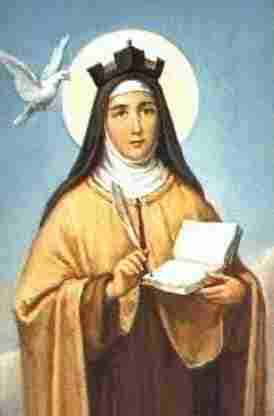Saint Andrew the Apostle Catholic Saint
Catholic Saints 28-12-2023, 19:42

Saint Andrew the Apostle
Catholic Saint
st.Andrew the Apostle-One of Jesus’ Twelve Disciples or Apostles
Feast Day : November 30
Name meaning: Strong, manly, valorous
Also known as: Andreas; Endres
Patronage: anglers; fishmongers; fishermen; against gout; maidens; old maids; singers; against sore throats; spinsters; against stiff-neck; unmarried women; women who wish to become mothers; Achaia; Amalfi, Italy; Avranches; Brabant; Brunswick; Burgundy; Greece; Holstein; Luxembourg; Minden; Patras, Greece; Pesaro; Russia; Scotland; University of Patras
Andrew was born at Bethsaida on Lake Genesareth (the Sea of Galilee). He was the brother of St. Peter and in adulthood lived with him in a house at Capharnaum, on Lake Genesareth. The brothers were prosperous fishermen. They were also followers of St. John the Baptist, through whom they came into contact with Jesus. Andrew was the first to meet Jesus; immediately recognizing him as the Christ, he introduced him to Peter. They followed Jesus on an evangelizing tour and later were called by him to be among his twelve regular disciples or apostles. Not much is known about Andrew’s subsequent career. Together with St. Philip, he presented the Gentiles to Christ (as described in John 12:20–22). When as a result of the persecutions of Herod Agrippa I (r. 42–44) the apostles were forced to flee Galilee, Andrew is believed to have preached in many regions. By tradition, he spent some time in Byzantium, where he appointed St. Stachys as the first bishop.
There is another unfounded tradition that he preached in Russia, reaching as far as Kiev in the Ukraine, whence the conversion of the Slavs spread in the 11th century. The exact whereabouts and circumstances of Andrew’s death are not known. According to an early account now known to be a forgery intended to counter Rome’s claim to the relics of SS. Peter and Paul, Andrew was crucified on an X-shaped cross (today called a St. Andrew’s Cross) at Patras (Patrae) in Achaia. This tradition has it that the Roman governor, Aegeas or Aegates, had him tied rather than nailed to the cross to extend his suffering, but that he used the opportunity to preach to all who came to view his execution. In any event, his martyrdom came during the reign of Nero, perhaps on November 30, A.D. 60. Andrew’s relics were translated to Constantinople, where they were deposited in the Church of the Apostles, about the year 357. Tradition has it that some were conveyed to Scotland in the fourth century, in response to a dream of St. Rule (Regulus) in which he was guided by an angel to a place called St. Andrew’s, where he built a church to house the relics. Rule became the first bishop of St. Andrews and spent the next three decades evangelizing the Scots. When the French Lombards took Constantinople at the start of the 13th century, Cardinal Peter of Capua carried the remaining relics to Italy and placed them in the cathedral of Amalfi, where most are to be found today.
Andrew’s head, however, was returned to Constantinople by Pope Paul VI (r. 1963–78). Andrew’s feast has been universal in the West since the sixth century. Andrew is represented as an old man with a book and an x-shaped cross; a man bound to a cross; a man preaching from a cross; a man sitting in a boat; a preacher holding some fish. His symbols include a fishing net, an x-shaped cross (saltire) and fish. In the oldest images, he is depicted with a normal Latin cross. The saltire became associated with Andrew beginning in the 10th century, becoming common only in the 14th.

st.Teresa of Avila Mystic and authority on mystical prayer, founder of the Discalced Carmelite Order, the...
Learn more
Biblical Definition Of BAAL Canaanite and Phoenician gods were known as Baals, or Baalim (the plural form of...
Learn more
Concerning Retaliation Matthew 5 Matthew5:38 You have heard that it was said: ‘An eye for an eye, and a...
Learn more